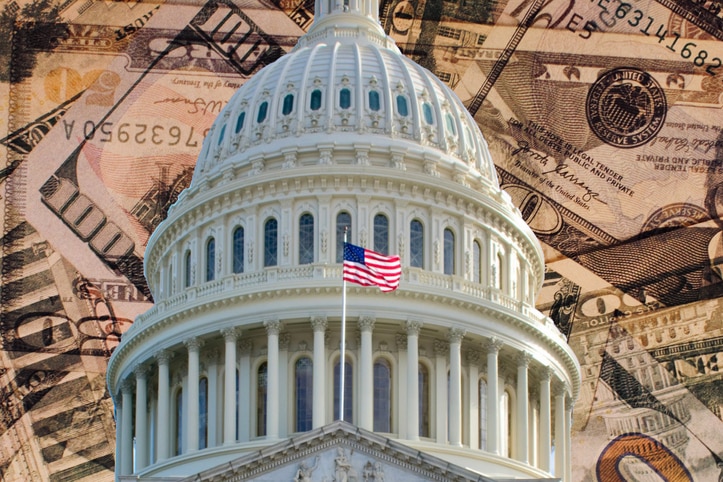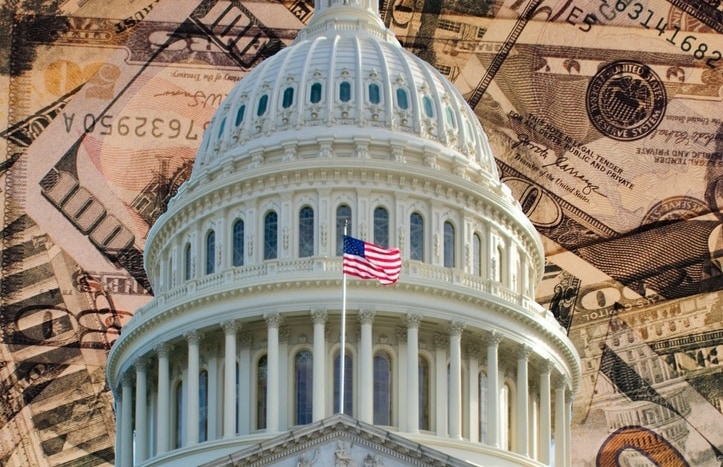
Predictions surrounding a debt ceiling default have been echoing through the media for months now, causing hearts to race and eyebrows to furrow. And the fear is palpable – and rightly so. If the US government fails to raise the debt ceiling by early June, we could witness a calamitous unraveling of the housing market, a sharp spike in mortgage rates, and an economic collapse of cataclysmic proportions.
But what is this ‘debt ceiling’ everyone is talking about, and why does it have such a chokehold on our global economy? The debt ceiling is simply a limit set by the US Congress on the amount of money the federal government is legally allowed to borrow. The government borrows substantial sums every month to cover its expenses, as its tax revenues fall short of meeting its obligations.
If Congress doesn’t raise the debt ceiling, the government would reach its borrowing limit and be unable to take on more debt. This could lead to a default on its commitments, which includes everything from social security checks to military salaries and, importantly, the interest on its massive pile of debt.
Understanding the Debt Ceiling
Essentially, the debt ceiling represents the legal borrowing limit for the U.S. government. This ceiling is crucial because, as most are aware, the U.S. government needs to borrow substantial amounts every month due to its tax revenue being insufficient to cover all its obligations.
If the debt ceiling isn’t increased, the government’s borrowing capacity is hampered, making it difficult for it to meet numerous obligations, including interest payments on its sizeable debt.
The Consequences of Not Raising the Debt Ceiling
Should the government be disallowed from borrowing for an extended period after hitting its ceiling, we could face serious repercussions:
- Economic Shockwaves: A sudden halt to government expenditures and interest payments could send shockwaves through the global economy. Millions of people and institutions depend on these funds, and a debt ceiling default could trigger a chain reaction of defaults.
- Global Financial Instability: A default on U.S. debt instruments, such as Treasury Bills, could have a similar rippling effect on the world’s financial system. U.S. Treasuries serve as the guaranteed returns for investors, a safe haven during crisis periods, and the most reliable collateral for borrowers.
Recently, real estate marketplace giant Zillow chimed in on this topic, suggesting that a debt ceiling default could cause the US housing market to plunge into a deep freeze. Their article delves into the repercussions in more detail and is a must-read for anyone interested in the potential impact of a debt ceiling default.
The Ripple Effects of a Debt Ceiling Default
If a prolonged default does occur, the numbers are daunting. Unemployment could soar, up from its current rate of 3.4%. Mortgage rates could jump to jaw-dropping new highs. Home sales activity might plummet by a staggering amount.
A recent Zillow publication titled “A Debt Ceiling Default and its Impact on the U.S. Housing Market“ provides an in-depth exploration of this subject. The article, certainly worth a read, elaborates on the potential impact of a default on the housing market.
A prolonged default on the debt ceiling could have severe and unpredictable consequences, including:
- Unemployment Rise: Unemployment rates could skyrocket. We might see a leap from the current rate of 3.4% to an alarming 8.3%.
- Mortgage Rate Hike: Mortgage rates could experience a dramatic increase, potentially hitting a staggering 8.4%.
- Decline in Home Sales: The housing market wouldn’t be spared either. We could witness a dip in home sales activity by up to 23%.
- Unpredictable ‘Knock-on’ Effects: Market analyst Brent Johnson warns that these effects could just be the beginning. A debt ceiling default could lead to an unpredictable series of ‘knock-on’ effects, making it challenging to calculate the full extent of the potential damage.
With Rate Watch, we’ll notify you via email when rates drop below your current rate.Get notified when rates drop!
Political Factors
However, it’s critical to note: the likelihood of an actual default remains low. As per the National Real Estate Post’s recent video, “Lights, Camera, Drama!” failing to extend the debt ceiling would be politically damaging for both parties.
Political theories suggest the Biden Administration might allow a default to blame the ensuing recession on Republicans. Conversely, some Democrats suggest the GOP may wish to do the same. Despite these speculations, it’s more likely that a default will be avoided and business will continue as usual by June.
An Unlikely Scenario?
The good news? A default is highly unlikely. A video released by the National Real Estate Post, entitled “Lights, Camera, Drama!”, notes that allowing the debt ceiling to remain static would be “political suicide” for either party.
Even so, theories abound. Some suggest that the Biden administration might permit a default to occur, then blame the ensuing recession on the Republicans. On the other side of the aisle, accusations are flying that the GOP might be plotting a similar strategy.
Still, the odds remain in our favor that we’ll avoid a default and that, despite the drama, things will chug along as usual come June.
FAQs
What is the government debt ceiling deadline?
The government debt ceiling deadline is a legally mandated date by which the U.S. Congress must either approve an increase in the debt ceiling, which is the maximum amount of money that the federal government is allowed to borrow, or risk a default.
How does the debt ceiling affect mortgage rates?
If the debt ceiling is not raised, leading to a U.S. government default on its debt, this could result in increased mortgage rates. This escalation in debt ceiling mortgage rates happens because a default increases the perceived risk associated with lending money in the United States. Consequently, lenders would demand higher interest rates to compensate for this heightened risk.
What would happen in the event of a debt ceiling default?
In the event of a debt ceiling default, the U.S. government would be unable to meet all of its financial obligations. This could mean delayed payments to contractors and employees, missed social security checks, and even the failure to make interest payments on the national debt. On a larger scale, it could also lead to higher interest rates, increased unemployment, and a decline in home sales.
In conclusion, while the concept of a debt ceiling default can be intimidating, it’s important to stay informed and understand the potential impact on our economy, housing market, and personal finances. For now, let’s keep our fingers crossed that our political leaders will steer us away from such an economic iceberg and continue business as usual.
Securing Your Financial Future Amidst Uncertainty
In the face of the potential debt ceiling crisis, the economic environment is venturing into unknown territory. Now more than ever, it’s essential to align yourself with a lending partner who comprehends the intricacies of this situation and its potential implications for the housing and mortgage sectors.
With our market knowledge and financial expertise, JVM Lending provides timely insights and sound advice, helping you make informed decisions in an unpredictable market. We monitor these economic fluctuations closely, interpreting what they mean for your home financing or investing needs. Don’t let uncertainties dictate your financial future.
Contact us today and leverage our experience and insights to secure your financial well-being amidst economic uncertainties and beyond.







